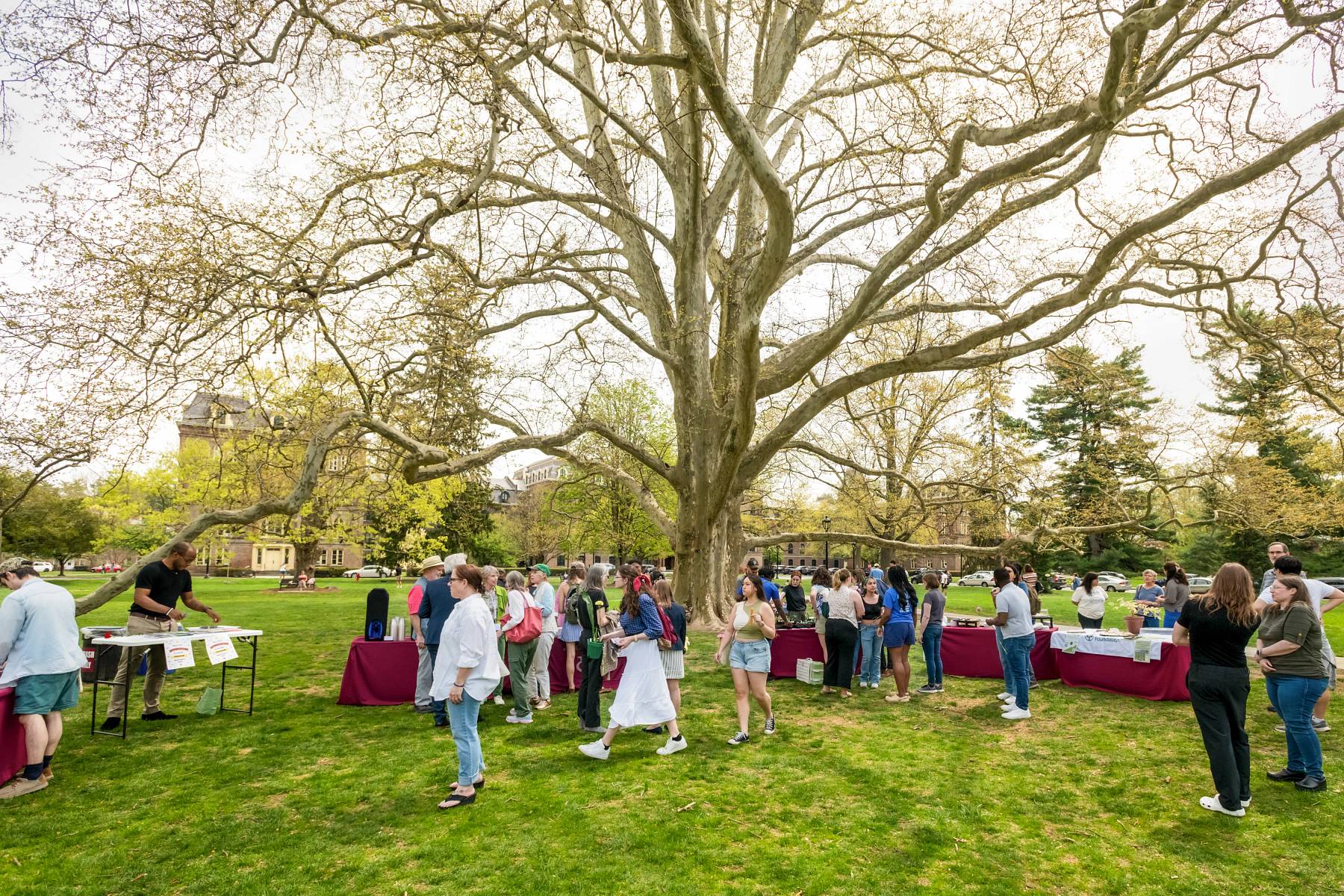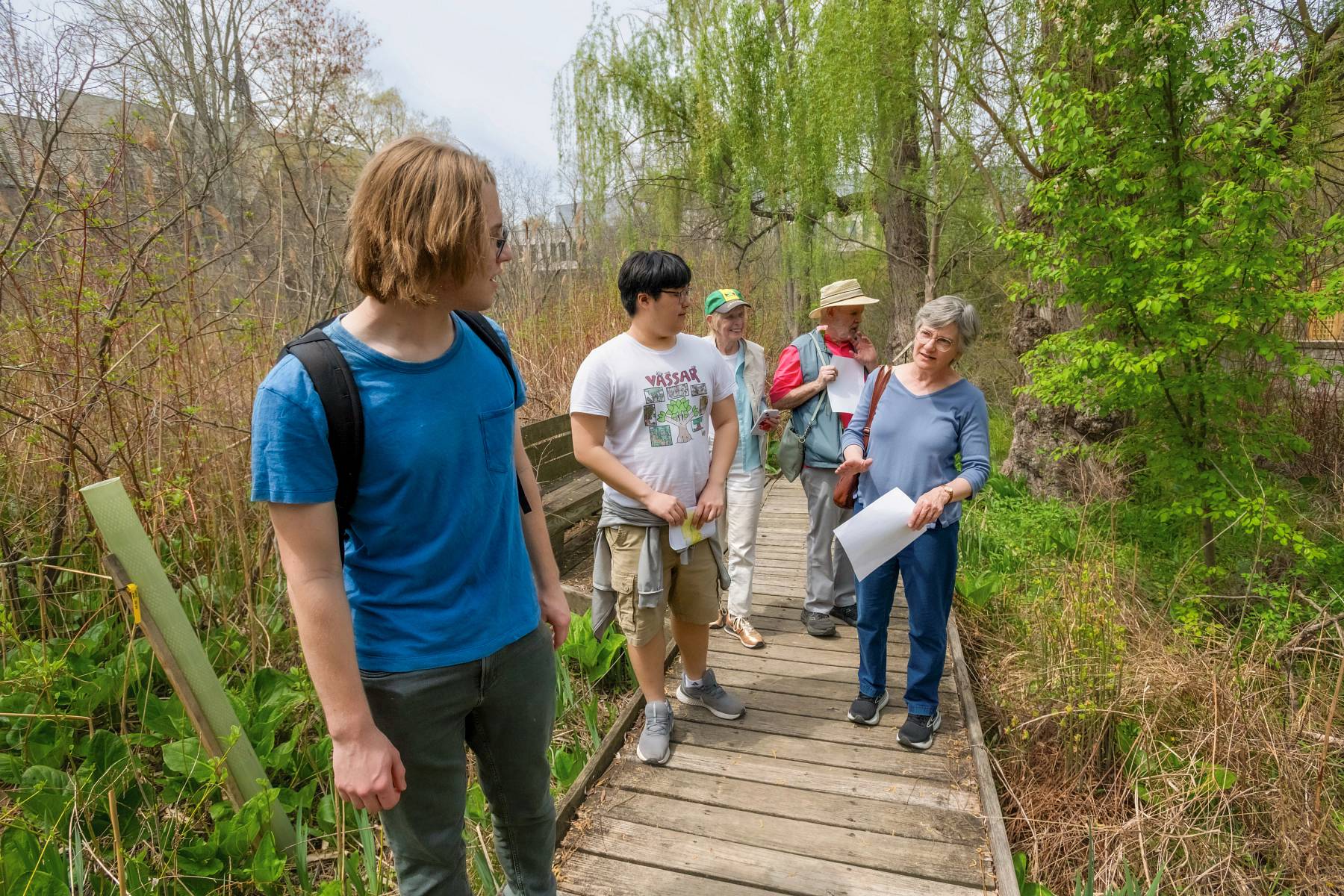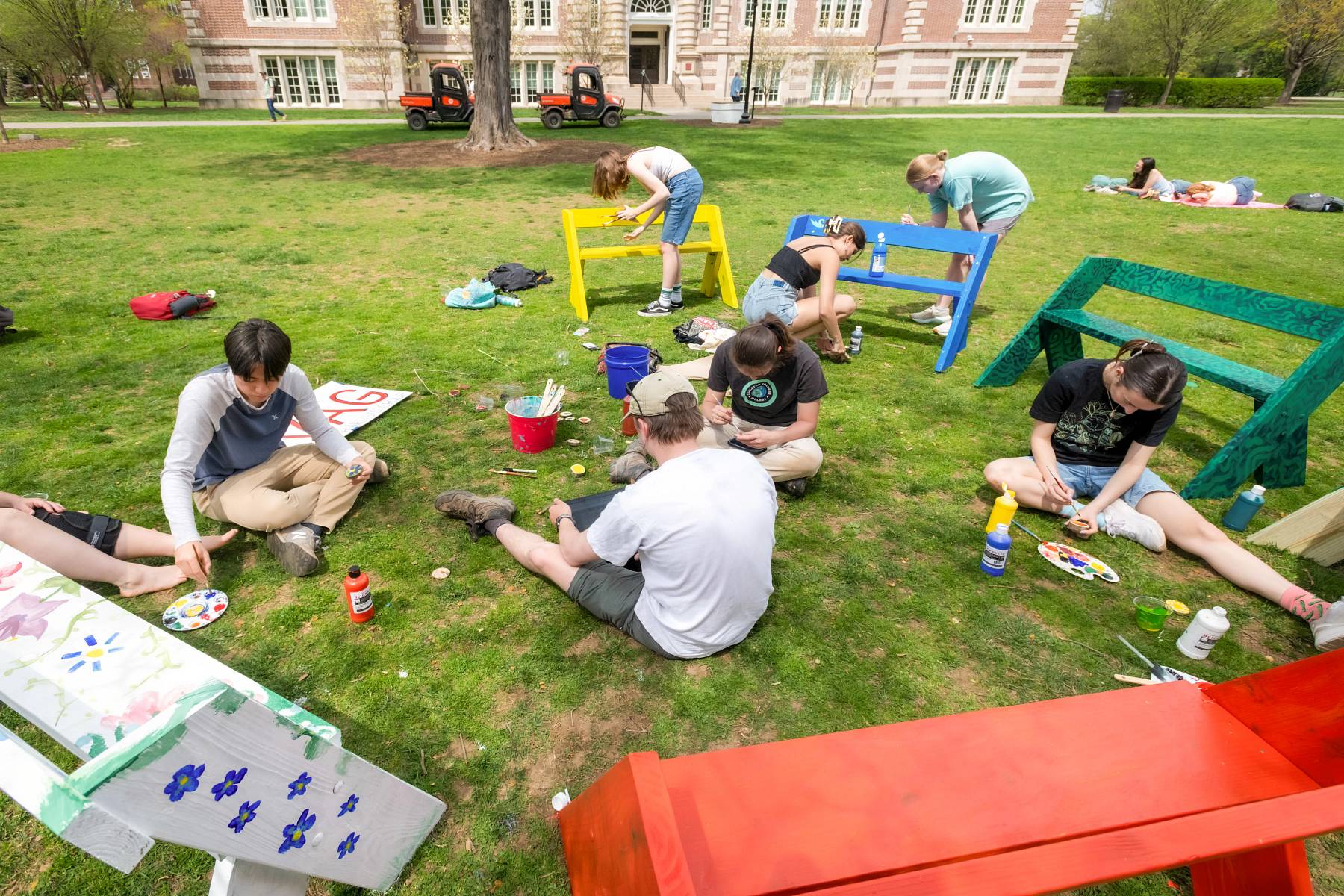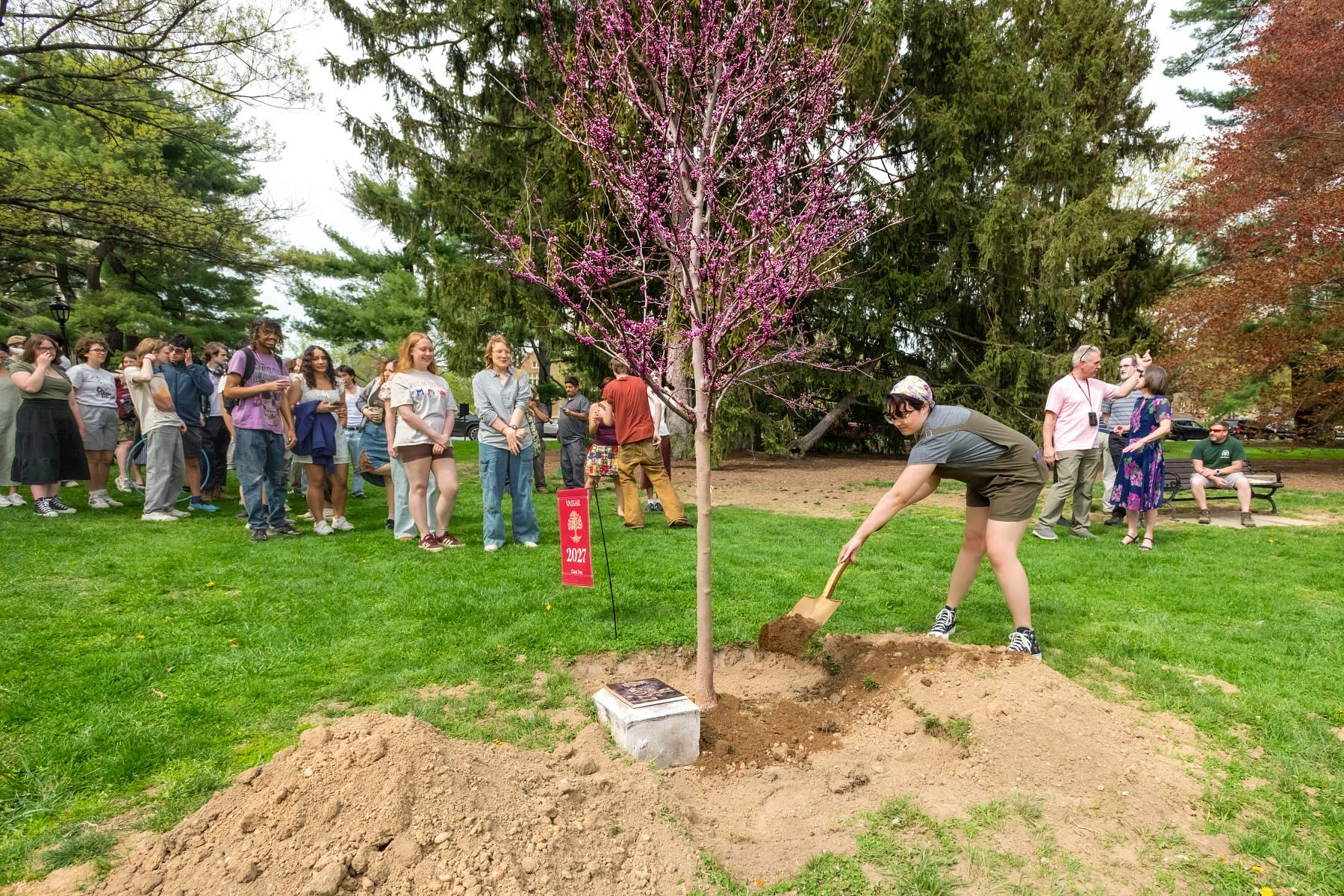On the Occasion of Arbor Day, Vassar Celebrates the 100th Year of Its Arboretum
On a warm Arbor Day, with birds hopping gaily through the grass, students, faculty, staff, and alums converged on the Library Lawn under the shadow of Vassar’s world-famous London Plane tree. This wasn’t just any Arbor Day celebration—it was the official kickoff of the College’s 100th Anniversary of its cherished Arboretum.

President Elizabeth Bradley took to the microphone, first to thank the Arboretum Centennial co-chairs: Director of Sustainability Kenneth Foster and Art History professor Yvonne Elet, who were both in attendance, mingling with the students and groundskeepers. President Bradley gave a quick rundown on the 1925 founding of the Arboretum, which is commonly attributed to the efforts of landscape architect Beatrix Farrand and less commonly to Vassar botany professor Edith Roberts. “You may wonder which trees count as part of the Arboretum,” said President Bradley, looking out over the crowd.
“It turns out it’s a really complicated question,” she said.
The Arboretum is not one discrete location; it consists of three areas. The forested and marshy areas around the Fonteyn and Casperkill creeks, including the area between Olmsted and Skinner Halls that Edith Roberts long ago made into the Dutchess County Outdoor Ecological Library, constitute one area. The Preserve at Vassar, the 525-acre expanse located across Hooker Avenue, offers another, wilder ecological experience, featuring hiking trails, Vassar Farm, and a field station for research. But it’s the central campus, comprising the trees that are specifically labeled for educational and informational purposes, that is the crown jewel of the Arboretum, where trees are carefully curated and tended to create a living work of natural beauty.

In other words, if you’re on campus and you’re trying to figure out where the Arboretum is, well, you’re standing in it. As the afternoon continued, a self-guided “gratitude walk” among the trees offered visitors the chance to stroll through campus, past Noyes and Cushing and down to Sunset Lake, learning about some of the College’s most magnificent flora while scrolling through the prompts on their smartphones. There was a gratitude exercise to fit each specimen (for example, “The Dawn Redwood drops all its needles every winter. This makes it unusual and special. What is something extra special about you that you are grateful for?”).
Back on the Library Lawn, where members of the Vassar Artists’ Group were creatively painting wooden benches to be placed around the Preserve, Foster was giving away an abundance of tree-shaped cookies. “It might be your only chance to eat a tree cookie that’s not Christmas tree-shaped,” he urged. (Indeed, their puffy outlines made the treats look decidedly deciduous.) Another administrator, Wendy Maragh Taylor, Associate Dean of the College for Student Growth and Engagement, was there to pass out even more treats; she reminded the crowd that the day was also a “Community Care" day, first launched during the COVID pandemic so students could interact outdoors and boost their mental health. And at a nearby table, a sophomore hosted a station for Vassar’s Counseling Service, handing out a flyer entitled “The Mental Health Benefits of Nature.” The messages fit right in with a new initiative, Vassar Nature rX, launched as part of the Campus Nature rX Network, which describes itself as “a coalition of colleges and universities dedicated to nurturing healthy, nature-connected campus communities through inclusive and equitable nature engagement teaching, research, and outreach.”

The afternoon would have felt incomplete without acknowledging the grounds crew who keep the campus beautiful and the trees healthy. Fittingly, they were honored in front of the beech tree planted in memory of Superintendent of Grounds Henry Downer, who held the position at the founding of the arboretum. Professor Elet heralded Grounds Manager Dean Jaeger, reminding the crowd that taking care of an arboretum is “so much more than mowing and mulching.” Jaeger deflected praise onto his team of workers, naming each as the crowd clapped and ate ice cream bars provided for the occasion.
Just a few steps away from the beech tree stood a small sapling planted in a freshly dug patch of soil—the latest addition to the campus Arboretum—a class tree commemorating the Class of 2027. The planting of class trees is a tradition dating back to the planting of a swamp white oak by the class of 1868. This one came with a stamp of approval from Foster, who introduced it as “a marvelous choice.” According to sophomore Arantza Artieda, who spoke alongside several of her classmates, the Eastern Redbud was not only a beautiful selection for their class but an apt one since it suited the character of the class. “Known for its vibrant pink and magenta flowers that bloom boldly before leaves appear, it doesn’t wait to blend in with greenery,” she reported. “It leads with color, character, and confidence.” Following the remarks, students lined up to shovel a scoop of dirt onto the base of the sapling using a spade that had once belonged to Matthew Vassar.

As the afternoon came to a close, students and an eclectic group of local clergy, led by Sam Speers, retiring Associate Dean of the College for Religious and Spiritual Life and Contemplative Practices, offered interfaith prayers and songs to suit the moment. There was a touch of somberness as some of the speakers remarked about our uncertain political climate. But Speers ended on an uplifting note, speaking of “a great God who holds us and names us and is always doing something new while the days lengthen, and the earth turns, and the daffodils bloom.”
The Centennial celebration of the Vassar Arboretum continues all year. To learn more about the activities and events, visit vassar.edu/arboretum.